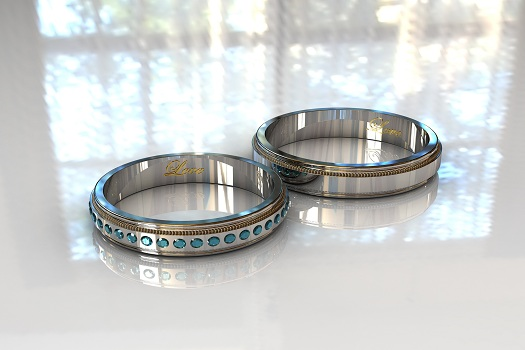Where Can You Find Palladium in Items around the Home?
Palladium, represented with the symbol Pd and atomic number 46 on the periodic table of elements, belongs to a group of metals that also contain platinum. Palladium is a shiny silvery-white metal that’s not widely known to most people. However, although it’s considered rarer than other precious metals, palladium is present in a variety of common household items. The precious metals experts from First National Bullion, the palladium, platinum, silver, and gold dealers Scottsdale collectors rely on for outstanding quality and service, highlight a few everyday items that contain this precious metal.
About Palladium
William Hyde Wollaston, an English physicist and chemist, discovered the metal in 1803 and named it after an asteroid called Pallas. While sharing properties with other metals in the platinum group, palladium is unique in that it isn’t as dense and has a lower melting point. However, palladium also has a high temperature tolerance and resists corrosion, scratching, and tarnishing, which makes it useful as an alloy in many items. Palladium is mined in Canada, Russia, South Africa, and the United States.
Electronics
Palladium is often used in cell phone and laptop components, and it’s also found in ceramic capacitors having multiple layers. Due to the metal’s high level of conductivity, manufacturers commonly include it in the connector plates of a variety of electronic products.
Jewelry
Jewelry is one of the many industries that use palladium. The metal might be found in everything from belt buckles and necklaces to earrings and rings. When combined with gold, palladium becomes white gold. Although white gold might also be made using nickel and silver, palladium is favored because it’s hypoallergenic. Jewelry made with palladium is lighter in weight, doesn’t oxidize, and retains its luster, which reduces the need for cleaning and polishing.
Printed Photographs
The use of palladium salts to create photographs became common during the late 1800s, as the photographs displayed a unique quality in tone. The effect was obtained because of the salts’ light-sensitive quality. Palladium salts combined with platinum are used in the platinum printing process to create black-and-white photographs. The final product has a general matte appearance and is known to last longer than photographs created using other traditional types of printing. The technique is especially popular among professional photographers who want to create artistic images.
Musical Instruments
High-quality instruments often contain various parts made using precious metals. Silver and gold are common components. However, instrument manufacturers have been known to often use palladium to construct the tubes contained within flutes.
Dental Appliances
Anyone with dental fillings, bridges, or crowns may have palladium in their mouths. The appliances only require less than 0.5 percent palladium to benefit from the metal’s resistance to corrosion. Thus, the dental fixtures aren’t affected by saliva, foods, or beverages. The metal blends well with other materials and may be combined with copper, silver, or tin in the manufacturing of dental products. As the metal is naturally white, dental products made using palladium are also more easily matched to a patient’s natural tooth color.
Whether they’re veteran palladium collectors or new investors looking to buy silver bars, Scottsdale residents should reach out to the experts at First National Bullion. We offer a huge selection of palladium, gold, platinum, and silver items. Scottsdale collectors who are looking for the finest-quality coins, bars, and bullion should give us a call at (480) 546-5089 to speak with one of our precious metals experts.
The statements made in this blog are opinions, and past performance is not indicative of future returns. Precious metals, like all investments, carry risk. Precious metals and coins may appreciate, depreciate, or stay the same in cash value depending on a variety of factors. First National Bullion does not guarantee, and its website and employees make no representation, that any metals for sale will appreciate sufficiently to earn the customers a profit. The decision to buy, sell, or borrow precious metals and which precious metals to purchase, borrow, or sell are made at the customer’s sole discretion.


